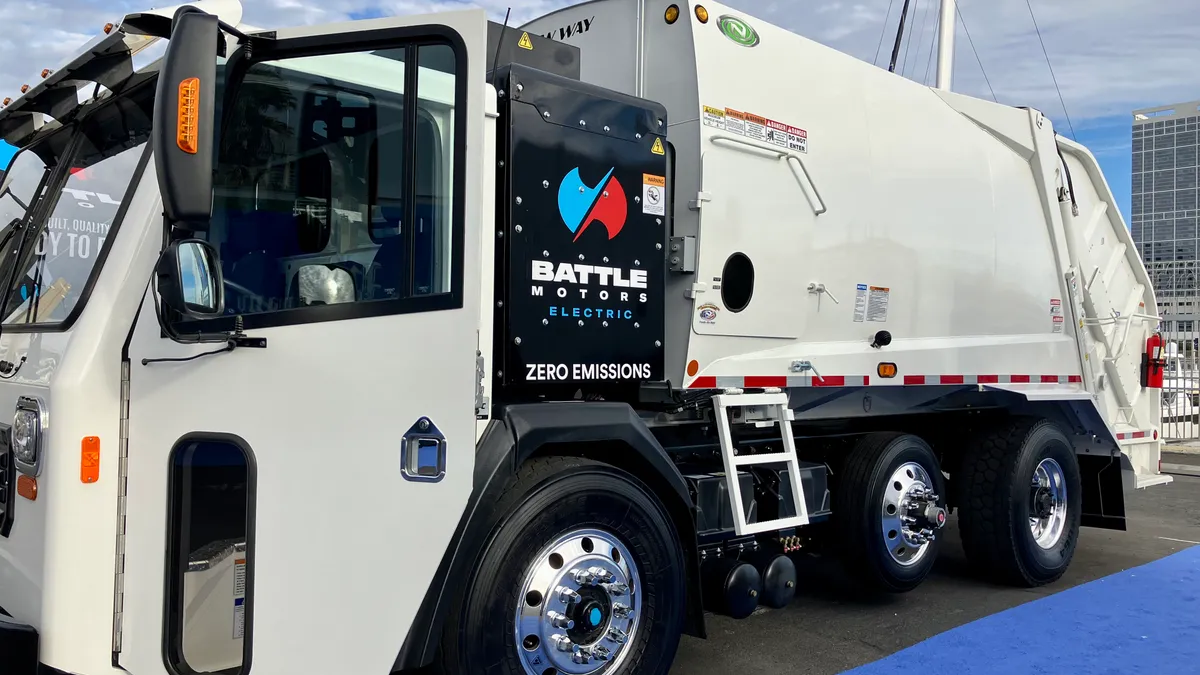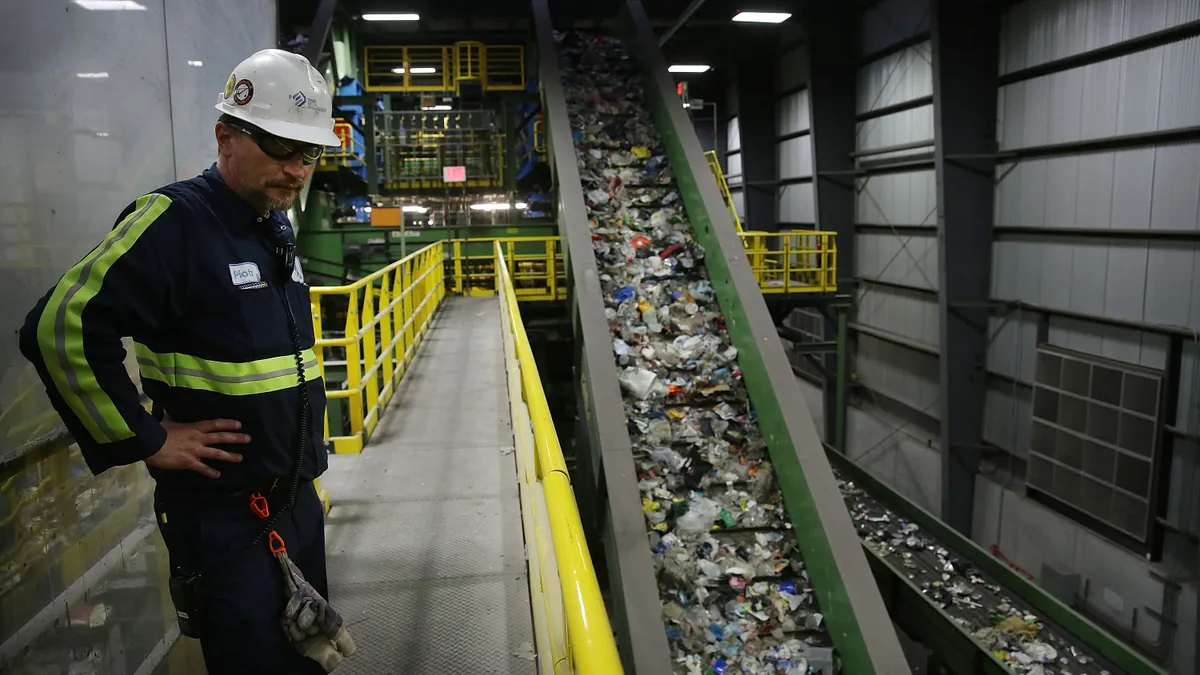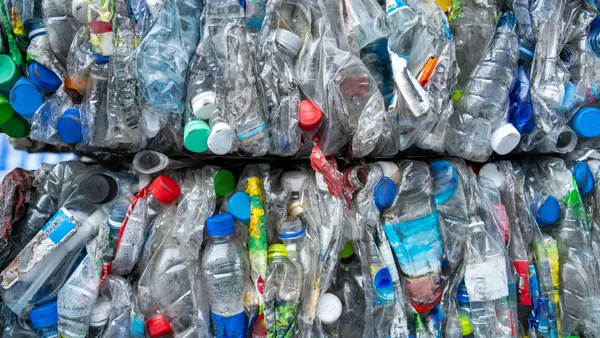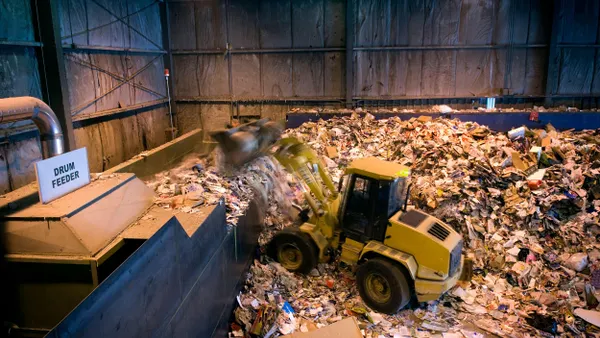As more states ban PFAS in packaging, MRFs that process recycled materials destined for new packaging will need to determine where they fit into the process. At a WASTECON panel last week, speakers discussed how current and future laws on per- and polyfluoroalkyl substances could affect the sector — and what MRF operators can do while awaiting clearer regulations.
Sonoco, a consumer packaging company, is already fielding customers’ questions about whether its products contain PFAS. “They’re not only saying, ‘does this have PFAS in it?’ but also, ‘can you get rid of it?’” said Scott Byrne, Sonoco’s director of global sustainability, during the presentation.
Sonoco operates several MRFs that process recycled paper for the company’s products, and Byrne said its operators are more focused on daily operations than worrying about whether the material they sort contains PFAS. Byrne suspects that will change in the coming years, but it’s unclear where MRFs should start focusing their energy to stay ahead of any PFAS problems.
“We’re interested in learning whether our MRFs need to start preparing for this next frontier of PFAS and how we can mitigate potential risks,” he said.
Upcoming U.S. EPA decisions could offer more details into what role MRFs will need to play in overall management practices, but could also bring more uncertainty, said David Wagger, chief scientist at the Institute of Scrap Recycling Industries. One major update is the EPA’s preliminary plans to designate two PFAS, perfluorooctanoic acid (PFOA) and perfluorooctanesulfonic acid (PFOS), as hazardous substances.
Recyclers are monitoring the designation closely, along with landfill operators, in part because it will fall under the Comprehensive Environmental Response, Compensation and Liability Act, known as Superfund. The recycling industry, like the waste industry, worries a change to CERCLA regulation could have unintended consequences. Examples could include landfills or MRFs having to reject PFAS-containing material, incur new costs for sorting or processing the material or getting roped into PFAS-related lawsuits, Wagger said.
Some states have banned PFAS in food packaging. Those state laws could also have an effect on MRF responsibilities or operational costs in the future depending on how each law is written, Wagger said.
Eleven states have passed laws banning intentionally-added PFAS in packaging, with New York’s law set to take effect Dec. 31 and California’s to take effect Jan. 1. Washington state’s law will incrementally ban specific types of food packaging containing PFAS once “safer alternatives” are identified.
The term “intentionally-added” could be helpful for MRFs, Wagger noted, because the “generally accepted argument” is that MRFs don’t add PFAS to their recycled materials. “They are recognizing that at some level, it can't be helped that recycled materials might have some PFAS, and they’re not penalized because of it,” he said.
One unknown is whether such regulations could eventually affect a MRF’s ability to sell bales. End markets that want recycled materials in their products may worry about whether the feedstock has too much PFAS to meet packaging regulations in the states where they sell such products, even if PFAS wasn’t intentionally added.
“Even if these [prohibitions] aren't in your state, they could affect your ability to sell material ... It's about who you're marketing your materials to, where they are located and where the end users sell their material,” Wagger said.
MRFs can also look at their contracts with haulers and municipalities for specific PFAS regulations that could put them on the hook for additional management processes, or whether haulers or municipalities are also responsible for managing PFAS-containing materials at the curbside or elsewhere in the process, he said.
As MRF operators await more clear guidance on managing PFAS in the materials they sort, Wagger also recommends examining overall housekeeping practices for possible improvements to avoid spreading PFAS in the environment. Minimizing stormwater runoff issues is one important facet, he said.
Wagger recommends looking at state stormwater permits to determine if they specifically mention any PFAS provisions — language he anticipates will start to show up in more and more state general permits for industrial discharges.
Colorado’s permit, for example, includes a section that requires facilities to prevent contact between PFAS-containing materials and stormwater. This likely doesn’t apply to recycled materials on the sorting belt, but could apply to other MRF activities such as dousing fires with firefighting foam — a common source of PFAS. “Evaluate your firefighting materials and take precautions to prevent it from going into the environment,” he said.














